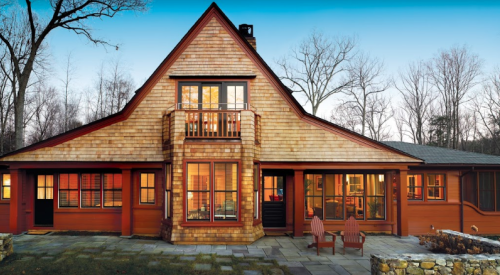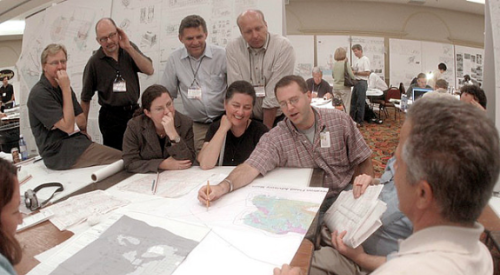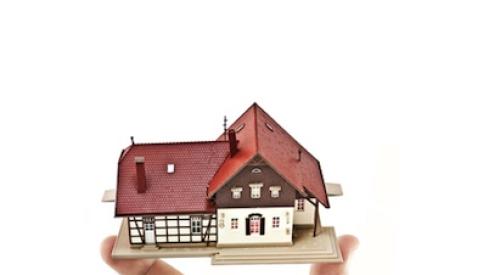| Senn and Youngdahl’s Heritage model in the suburban Twin Cities area harkens back to another time, yet its design-savvy floor plan and long list of options appeal to a thoroughly modern audience.
|
"A comfortable house is a great source of happiness. It ranks immediately after health and a good conscience." These simple words by English clergyman and essayist Sydney Smith inspired the style, design and presentation of Senn & Youngdahl Fine Builders’ Heritage model. The phrase, in fact, is a large part of the overarching philosophy of the company.
Not small by any means, the 2455 square foot, four-bedroom house in Stillwater, Minn., nonetheless aims at being comfortable. Visitors to this home will not see vaulted ceilings (and, therefore, monstrous roof lines), a grand spiral staircase in the entryway or an overblown master suite with so much space that a couple could easily lose one other en route to an adjoined sitting room.
What does await new home shoppers is attention to individualized details, a thoughtful selection of products and finishes, innovative merchandising and just plain smart design.
Nestled in the TND (Traditional Neighborhood Design) development Liberty on the Lake in the suburban Twin Cities’ town that claims to be the first settlement in Minnesota, Senn & Youngdahl’s home embraces its historical heritage. Aptly-named, the Heritage’s craftsman-style exterior features gable brackets, sturdy square porch columns, lap siding detail and a front cedar shingle siding element. The side-loaded garage, sited at the rear of the home, and the wide, wrap-around porch maximize its street presence and give the home a neighborly appeal.
Combined, these elements harken back to older, established residences -- the kinds of places that just feel like a home, no matter who lives there. Homes like that have character, and so does this one. And buyers -- and other builders -- recognize this fact immediately.
"In this area of the market, we have certainly set a design trend with the older style home," says director of design Darren Senn. "This concept is sweeping the country -- the old traditional neighborhood plan, with the older styles of homes [like those] built from the 1890s to the 1930s."
| Interior details like this arched doorway with lighted niche and built-in bookshelves show a commitment to individualizing buyers’ homes.
|
Inside, too, tradition prevails, but here the look is a balanced blend of the craftsman style and newer trends. The light fixtures, furniture and accessories are what Senn calls "more transitional than stark craftsman" -- not Stickley furniture, but a charming mix of Pottery Barn chic and found items reminiscent of a bygone era.
Lots of wood trim -- the likes of which buyers don’t see in most new homes -- can be found throughout the lower level. Wainscotting and window trim add richness and warmth to the den and dining room, while a built-in oak bench in the entry gives home owners a place to unload when they come in the door.
In the living room built-in book shelves showcase collected treasures, and the dark oak color is a wonderful foil to the bright windows above that bring in "borrowed" light from the adjoining den.
"There’s an eclectic mix of interior architectural detailing of the house that hints toward the craftsman style: the fireplace detailing, the cased openings, trim detail on windows and the color and look of oak," says Senn. But the balance of old and new styles allows them to appeal to a larger market, he says.
The compact upstairs revolves around a short central hallway, with room for a small sitting area or family-computing center, which is made bright and sunny by three large windows in the stairway leading up from the kitchen. Note the location of the stairs: while sensitive to neighborly living, Senn and CEO Mark Youngdahl recognize that moms, dads and kids emerging from their upstairs dens first thing in the morning may not want to be exposed to the street view through a fishbowl foyer. The stair location provides privacy and also spills the home’s inhabitants into a logical place, since the kitchen is so often the center of activity.
As is the lower level, the upstairs is flooded with natural daylight. Even the bathroom, which sits smack dab in the center of the plan, is cheery because of the transom windows above the lavatory that let in the borrowed light from the stairway.
Not strictly a model home in the production sense of the term, the Heritage model is more of a jumping-off point for buyers, featuring some standard items and some upgrade packages. As modeled, the home sells for 458,900, and the home includes a balance of standard features and frequently requested upgrades.
Since Senn & Youngdahl purposely sets their production at manageable levels -- 17-18 homes this year and 25-30 next -- they have more opportunity to individualize each home. Each plan may offer several elevations, or they may come up with a custom one. Some buyers may go gaga over all the wood detail in the house, and others may find it a turn-off. The key is coming up with thoughtful packages of options that help customers express their tastes, while keeping good design sense in mind.
Putting the Pieces Together
| The exterior architectural details and the TND neighborhood also set it apart from the typical suburban new home.
|
Senn and Youngdahl, while humble, nevertheless think that they have really hit on something special with this model. Walking in, it just feels like home. But achieving that simple, emotional connection between a prospective buyer and a new house is far from easy. Numerous components, behind the scenes and out front, fit together like a puzzle to reach the goal Youngdahl says he sets for every home they build: First and foremost, buyers should fall in love with it.
"Price point is very important, but most consumers don’t buy based on a rational thinking process -- they buy based on an emotional process," says Youngdahl. "Most builders think people buy based on cost, and I think that’s far from the truth. What’s worse, we have conditioned our buyers to think that way too." And that’s why, he says, builders and buyers alike are stuck in this sea of beige, where few dare to step out of the home building safe zone.
He stresses that its not just the floor plan, wood details, color palettes, or the trendy, retro merchandising and big band background music that makes this model home a winner with buyers. It’s a very well-thought-out combination of all that, and much more. He compares the experience of presenting a home with Disney -- people go there for the experience of being at Disney Land, and the people at Disney strategize around that. The experience of seeing a model home should be no different.
Also See:
Finding Their Market Niche












